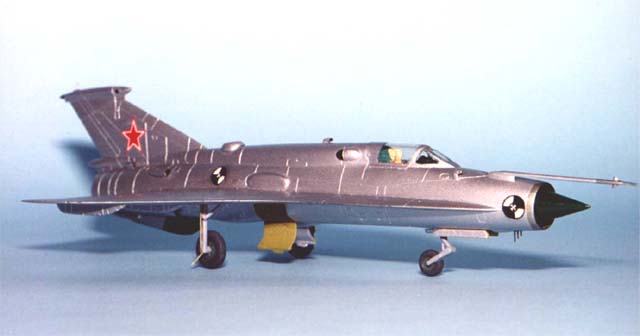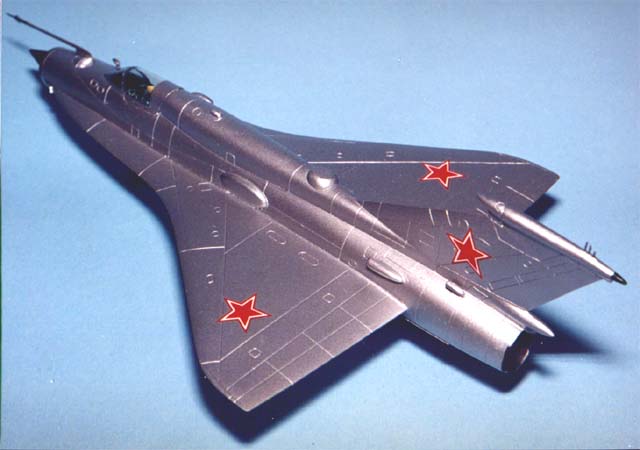|
MiG-21 I "Analog"
by Konrad Kondrat
|

|
|
MiG-21 I "Analog" |
Translation and photos by
Wojciech Perkowski

HyperScale
is proudly supported by
Squadron.com
The experimental MiG-21 I “Analog” was developed in
1968, as there was a necessity of wing characteristics research for
projected supersonic airliner Tu-144. Two slightly different examples
were build, both tail-less with double delta wings. Among many
experimental planes based on MiG-21, it’s the only known construction
with such configuration. Very long wing roots make the plane’s
silhouette original, and flight characteristics interesting.
Both “Analogs” were based on the MiG-21S.
The first, MiG-21 I/1, had triangular front wing roots and tangent
shaped main part of wings. Flight control systems were tested on this
prototype.

The MiG-21 I/2 was even more unique. The main parts of the wings were
also tangent shaped, but front wing roots were parabolic. Wing flow was
tested on this example. Cameras which recorded test flights were located
in fairings on top of the fuselage and vertical stabilisers. This plane
was also equipped with telemetric apparatus for flight parameters
transmission in real time.
A few years ago I started building 1/72 scale
models of planes from O.K.B. MiG and I wanted this prototype to join my
collection too. In fact, there is no accurate MiG-21S to start
conversion from, but after careful scale drawings analysis I drew a
conclusion that it wouldn’t be too difficult to use Mig-21 MF fuselage
(just few details are to be omitted to receive MiG-21 I/2 fuselage).
For this project I utilised Aga’s MiG-21 MF, which
originated from an Ukrainian moulds. The model of course isn’t Tamigawa
quality, but outlines are quite accurate. I rescribed panel lines,
scratchbuilt the cockpit interior, but didn’t improve undercarriage.

I used my own mixes of Humbrol enamels for interior and details colours.
Vertical stabiliser’s top was replaced by new one, new antennas and
fairings for cameras were added, and of course new wings (after short
session of trimming and dry fitting no filler was needed in
wing/fuselage join). The canopy was acceptable.
My model was sprayed with Revell aluminium, intake
ring Revell steel, green on dielectric surfaces approximated from
Humbrol range. Soviet stars were from spares box, “research” markings
were self-made. Humbrol Satin Cote sealed the surface.
The unusual look of the model caused great interest amongst my fellow
modellers, and they convinced me to prepare resin conversion kit for “Analog”.
Here is the kit:

The kit consists of new wings, vertical stabiliser’s top, various small
elements, KM-1M ejection seat used in this construction, scale drawings
and instruction. Fujimi and KP kits of MiG-21 MF are also suitable for
this conversion.
Click the thumbnails below
to view larger images:
Model and Original Text Copyright © 2002 by
Konrad Kondrat
Translation and Photos Copyright © 2002 by Wojciech Perkowski
Page Created 29 September, 2002
Last Updated 04 June, 2007
Back to HyperScale
Main Page
Back to
Features Index
|
Home
| What's New |
Features |
Gallery |
Reviews |
Reference |
Forum |
Search